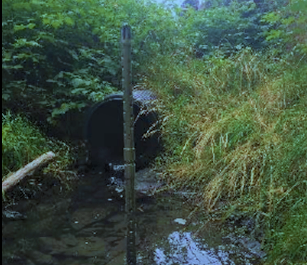Solid Waste Facility Monitoring
Sampling, Analysis, QA/QC
Sampling, analysis, and quality assurance/quality control are three major technical considerations for any landfill monitoring program. SW846 methods (Third Edition, including Final Update VI (2019) should be used for landfill water monitoring.
- DEC Groundwater Sampling and Monitoring Wells Guidance
- DEC Field Sampling Guidance
- DEC Guidelines for Data Reporting
- Sampler’s Guide: Contract Laboratory Program Guidance for Field Samplers (EPA)
- ASTM D4840 Sampling Chain of Custody Procedures
- RCRA Waste Sampling Draft Technical Guidance – Planning, Implementation, and Assessment (EPA 530-D-02-002)
- EPA Superfund Contract Laboratory Program National Functional Guidelines for Data Review
Groundwater Monitoring

Hydrogeological Study
The adequacy of a groundwater monitoring program hinges on the characterization of the site’s hydrology. Data of sufficient quantity and quality are required to determine the subsurface geology and hydrology to understand groundwater flow at the site and develop an appropriate groundwater monitoring program. Groundwater is not static in its behavior and therefore continued assessment of the hydrology is also necessary.
Detection Monitoring
The goal of detection monitoring is to determine if the landfill is impacting groundwater quality. Monitoring results are therefore compared to background concentrations.
Assessment Monitoring
Assessment monitoring is required to assess the nature and extent of landfill impacts to groundwater. Monitoring results are therefore compared to groundwater protection standards (GWPS) to determine if a corrective action must be taken to protect human health and the environment.
- DEC Assessment Monitoring Tech Memo
- 40 CFR 258 Appendix II - List of Hazardous Inorganic and Organic Constituents
Checklists
- DEC Groundwater Quality Assurance Project Plan (QAPP) Review Checklist
- DEC Groundwater Monitoring Report Checklist
References
- DEC Monitoring Well Guidance
- Ground-Water Sampling Guidelines for Superfund and RCRA Project Managers (EPA)
- 40 CFR 258.50 Subpart E Ground-Water Monitoring and Corrective Action
- Statistical Analysis of Groundwater Monitoring Data at RCRA Facilities - Unified Guidance (EPA 530/R-09-007)
- Errata Sheet - March 2009 Unified Guidance (EPA 530/R-09-07a)
- Unified Guidance Flowcharts (SWP):
Surface Water Monitoring

Surface water monitoring is required in accordance with 18 AAC 60.810 at solid waste facilities where surface water pollution is likely to endanger public health or cause a violation of water quality standards in 18 AAC 70.
Checklists
Visual Monitoring
Documented monthly visual monitoring is required for the active life and post-closure period of a facility [18 AAC 60.396, 18 AAC 60.397, 18 AAC 60.490, & 18 AAC 60.800(a)]. In addition, the permit application for most landfills require that the visual monitoring plan must include the checklist or form that will be used for visual monitoring.
Gas Monitoring

Explosive gas monitoring is required in accordance with 18 AAC 60.350 at Class I and Class II municipal solid waste facilities. SWP may also require gas monitoring at any other solid waste facility where we determine that gas control and monitoring are necessary to ensure that there will be no explosion hazard.
Additional Resources
- Solid Waste Emergency Response: Introduction to Municipal Solid Waste Facility Criteria (EPA 530-K-05-015)
- EPA’s Regional Screening Levels (RSLs)
- Solid Waste Disposal Facility Criteria: Technical Manual (EPA 530-R-93-017)
- Department of Defense - Quality Systems Manual
- Department of Defense - Fact Sheet for Detection and Quantitation
- Trainings by the Interstate Technology & Regulatory Council (ITRC) - ITRC has the following guidance pertinent to solid waste facility monitoring. Check their website for a full list of course offerings and dates.

 Indicates an external site.
Indicates an external site.